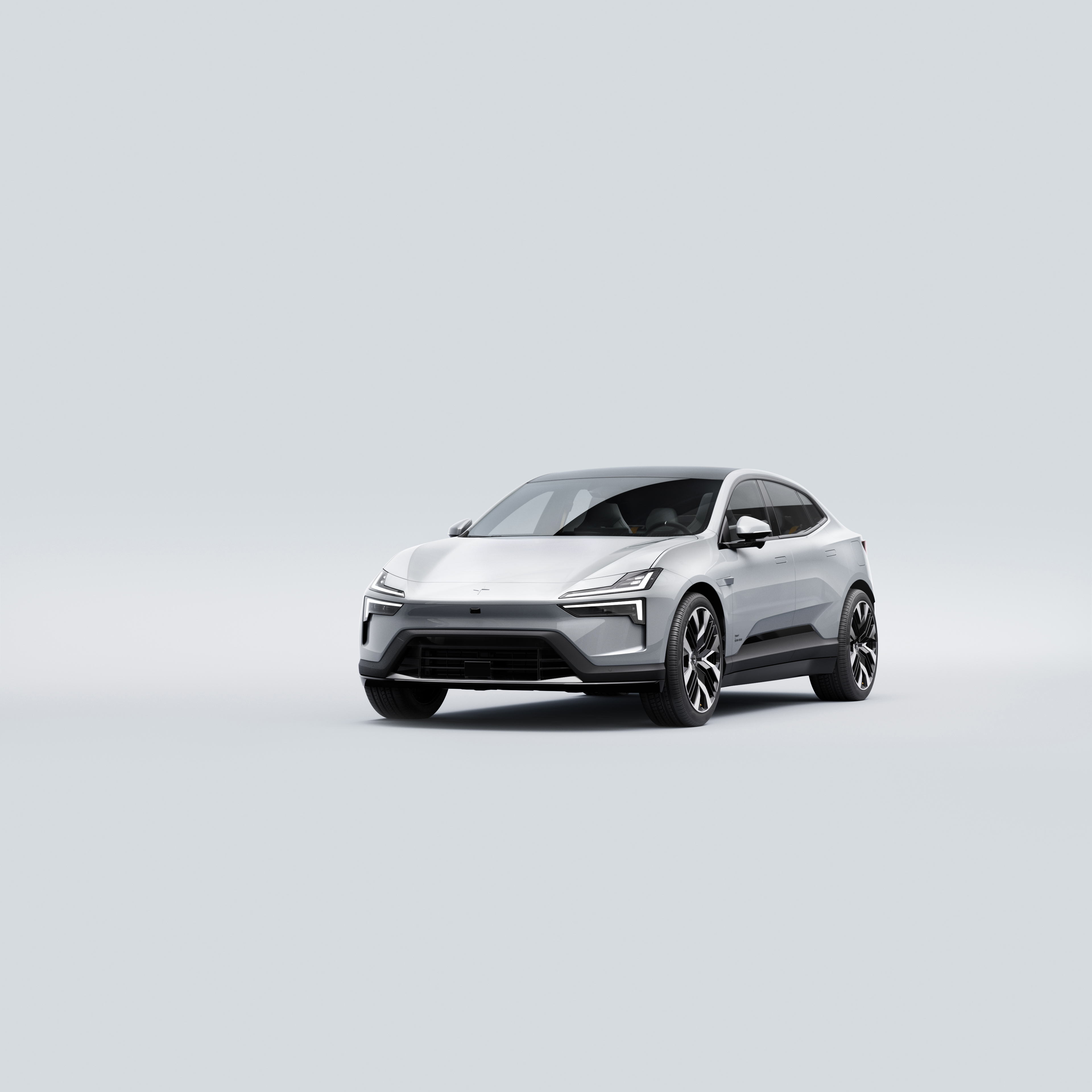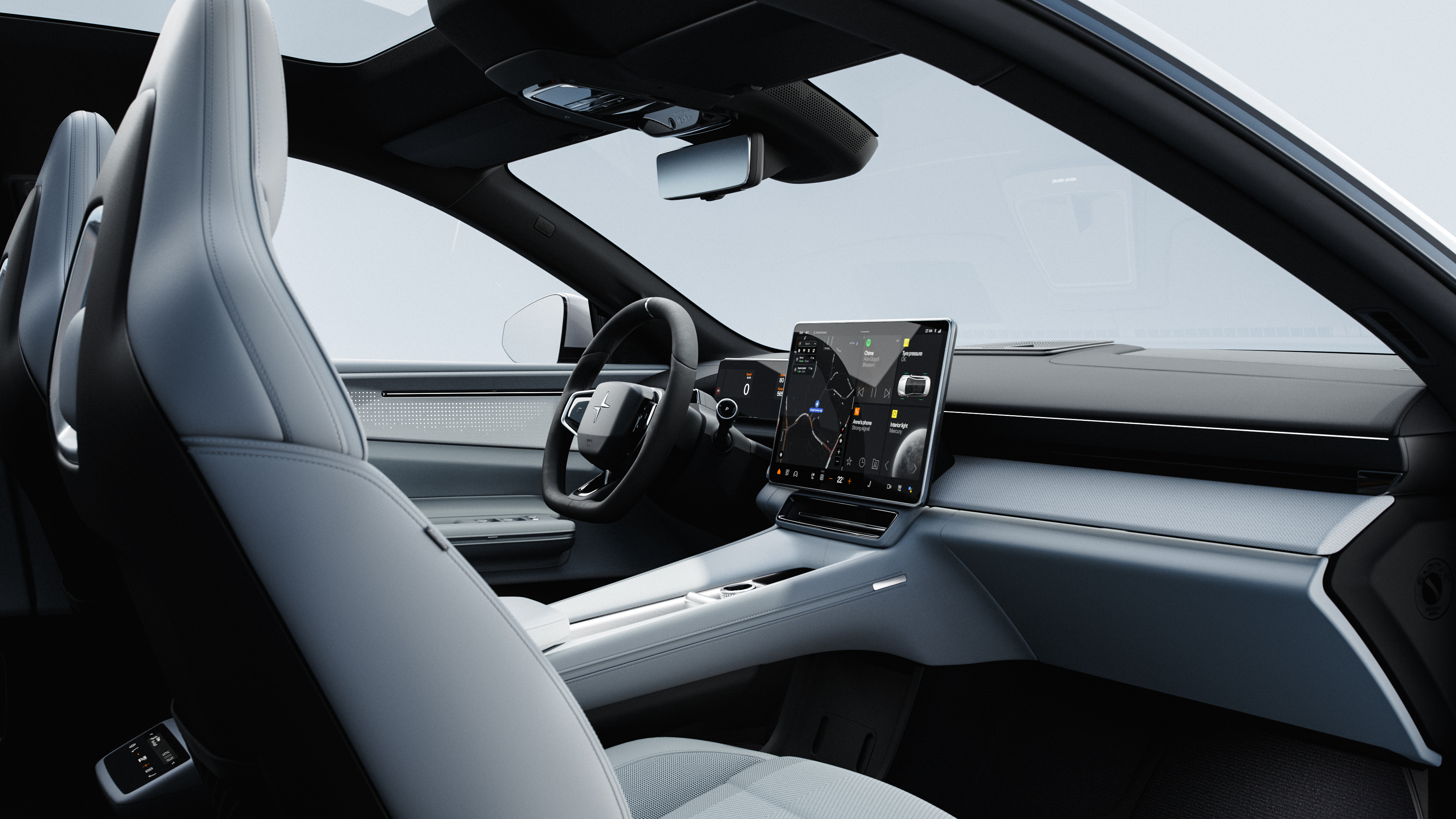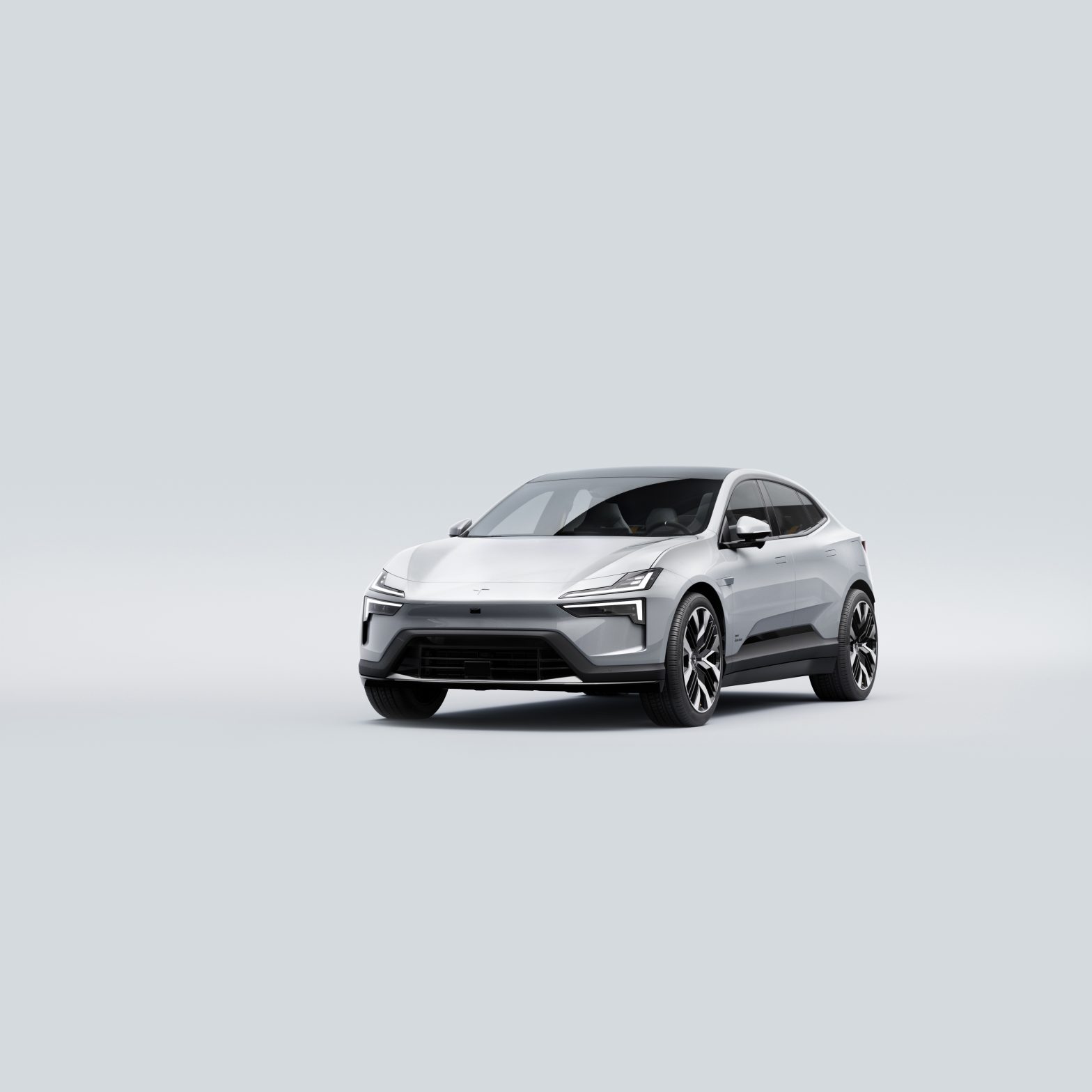Polestar introduced the Polestar 4, the second SUV in its lineup, at Auto Shanghai 2023. Actually, it’s technically an SUV coupé, meaning it has the space and four doors of an SUV, but the sloping roof and aerodynamics of a coupé.
The Polestar 4 has plenty of new specs that make it turn heads, but the most bold design choice has got to be the lack of a rear-view mirror. Instead, drivers will look at screens in their cabin when reversing, which will display a real-time feed from a roof-mounted rear camera.
The Volvo spinoff says this gives the driver a wider field of view than they would get just by looking out the back window. It is also bound to give some drivers anxiety. What happens if a rock breaks that camera, or if the feed glitches and stops working? No rear window means no backup in case of tech challenges, so Polestar must be pretty confident in what it’s bringing to the streets.
The company says there is a design rationale for the decision to nix the rear window, and that it was first tested with the Polestar Precept concept car.
“With Polestar Precept, we previewed a stunning new occupant experience by removing the rear window and pushing the read header, which plays an integral safety role, further back,” said Maximilian Missoni, head of design at Polestar, in a statement. “This means that now, rear occupants can have a unique experience in our SUV coupé.”
The elimination of the rear window also allows for a long glass roof that stretches beyond the rear occupants’ heads. The glass roof can come with electrochromic functionality, or smart glass, which can change to be transparent or opaque depending on the occupants’ needs.

The Polestar 4 has the spaciousness of an SUV and the sloping roof of a coupe. Image Credits: Polestar
From the outside, the car has a swiftness to it. The door handles are retractable and the frameless windows are flush with the body of the car. The low nose gives it the aerodynamics needed to make this the fastest production model Polestar has produced yet — it can go from 0 to 60 miles per hour in 3.8 seconds and has a maximum power output of 544 hp.
The Polestar 4 will be available in both dual- and single-motor versions. The dual-motor version will have semi-active suspension features so it hits sporty performance without sacrificing comfort.
Both long-range versions will feature a 102 kWh battery, and the dual motor has a target range of 350 miles. All versions get up to 200 kW DC and 22 kW AC charging, and bi-directional charging is also included for vehicle-to-load capabilities.
The Polestar 4 will launch first in China, with production planned in November 2023 for a Geely-owned production facility in Hangzhou Bay that runs on renewable energy.
Polestar plans to launch in other markets, including Europe, North America and Asia Pacific, in early 2024.
The Polestar 4 will be priced somewhere between the 2 and 3, at around $60,000.
Polestar 4 tech specs

Drivers can access the Polestar 4’s smart infotainment system, Apple CarPlay and Google products through a 15.4-inch screen. Image Credits: Polestar
Like all new EVs today, the Polestar 4 is packed with tech and inching slowly toward that just-out-of-reach goal of an “autonomous future.”
The car’s infotainment system is powered by Android Automotive OS and Qualcomm’s Snapdragon Cockpit Platform, which can be accessed through a 15.4-inch screen up front.
Apple CarPlay is included and Google is built-in, including Google Assistant, Maps and Play. So drivers can say things like “Hey Google, drive me to the nearest charging station,” or “Hey Google, play ‘Despacito,’” and directions or melodies will come streaming out of the Harman Kardon audio system, which is available as a 12-speaker option.
There’s also a secondary media and climate control screen mounted between the front seats for rear occupants to play around with.
But wait! There’s more! Screens, that is. There are more screens, because we don’t already have enough screens in our lives.
A 10.2-inch driver display is mounted ahead of the steering wheel and shows you speed, battery and range information. It can also show you other road users, current driving assistance functions and navigation information. If that’s too distracting, there’s also head-up display (which is basically a screen on your windshield) with a 14.7-inch projection area that gives the driver “key vehicle, telephony and navigation information,” according to Polestar. When it’s snowing, the HUD text color will switch from white to yellow to improve visibility.
Polestar uses Mobileye’s SuperVision advanced driver assistance system (ADAS), which relies on 12 cameras, one radar and 12 ultrasonic sensors. Owners can pay extra for the Pilot Pack, which includes lane change assistance.
To ensure that the driver doesn’t overly rely on the ADAS or fall asleep at the wheel, the Polestar 4 includes a driver monitoring camera that monitors the driver’s eyes and head movements. That and hands-on detection in the steering wheel keep the driver actively engaged.
